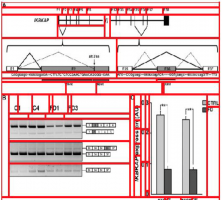
VizioMetrics is an image search engine and classifier. In order to improve it, we would like to automatically identify a “central figure” in a scientific article in cases when multiple figures are present. We defined “central figure” as a single visualization that encapsulates key aspects of a paper, a graphical summary that captures the content of the article for readers at a single glance. We surveyed 488,590 researchers in the biomedical field and found out that for an overwhelming majority of papers their authors were able to identify a single “central figure.”
Datalab Faculty
Bill Howe Jevin WestCollaborators
Po-shen Lee, PhD Candidate, University of Washington, Electrical Engineering (lead)
Sean Yang, PhD Student, University of Washington, Electrical Engineering
Lia Kazakova, Undergraduate Student, University of Washington, Computer Science and Information School
Chris Oh, Undergraduate Student, University of Washington, Information School
Maxim Grechkin, PhD Student, University of Washington, Computer Science and Engineering
Hoifung Poon, Researcher, Microsoft Research
Project Description
Scientific results are communicated visually in the literature through diagrams, visualizations, and photographs. These information-dense objects have been largely ignored in bibliometrics and scientometrics studies when compared to citations and text. In this project, we use techniques from computer vision and machine learning to classify more than 8 million figures from PubMed into 5 figure types and study the resulting patterns of visual information as they relate to impact. We find that the distribution of figures and figure types in the literature has remained relatively constant over time, but can vary widely across field and topic. We find a significant correlation between scientific impact and the use of visual information, where higher impact papers tend to include more diagrams, and to a lesser extent more plots and photographs. To explore these results and other ways of extracting this visual information, we have built a visual browser to illustrate the concept and explore design alternatives for supporting viziometric analysis and organizing visual information. We use these results to articulate a new research agenda – viziometrics – to study the organization and presentation of visual information in the scientific literature.
We originally used patch-based machine vision techniques to classify figures by visualization type, achieving 91% accuracy on a test set with 5 categories – equations (394), photos (782), tables (436), visualizations (890), and diagrams (769). More recently, we have begun using deep learning to achieve higher quality results at the expense of training time. For the task of classifying millions of images that we extracted from source papers, we found approximate 35% of them contains multiple sub-figures. A dismantling algorithm we proposed in ICPRAM 2015 resolves this issue by parsing each composite figure into multiple sub-figures. The algorithm splits each composite figure into visual “tokens” recursively, classifies each token as either auxiliary (e.g., text fragments) or standalone figures, then merges the tokens recursively to reconstruct whole figures. The algorithm terminates when the reonstructed figure achieve a certain “completeness” score based on their types and positions. Using the results of the dismantler, we can more precisely classify the sub-figures.
Publications
Dismantling Composite Visualizations in the Scientific Literature (2015)
4th International Conference on Pattern Recognition Applications and Methods
pdf | bibtex
VizioMetrix: A Platform for Analyzing the Visual Information in Big Scholarly Data (2016)
Proceedings of the 25th International Conference on World Wide Web, BigScholar Workshop
pdf | bibtex
Viziometrics: Analyzing Visual Information in the Scientific Literature (2017)
IEEE Transactions on Big Data
pdf | bibtex
Deep Mapping of the Visual Literature (2017)
Proceedings of the 26th International Conference on World Wide Web, BigScholar Workshop
pdf | bibtex
The Impact of Figure Type in The Biomedical Literature (2017)
PLoS Biology (in prep)
pdf | bibtex
PhyloParser: A Hybrid Algorithm for ExtractingPhylogenies from Dendrograms (2017)
The 14th IAPR International Conference on Document Analysis and Recognition (in prep)
pdf | bibtex
Press
June 2016: The Economist has written a nice print piece on our arXiv paper.
June 2016: Featured on LabWorm, a discovery platform that exposes top research tools with the goal of promoting a more open, collaborative and cutting edge science.
June 2016: MIT Technology Review wrote a nice piece on our project: The First Visual Search Engine for Scientific Diagrams
